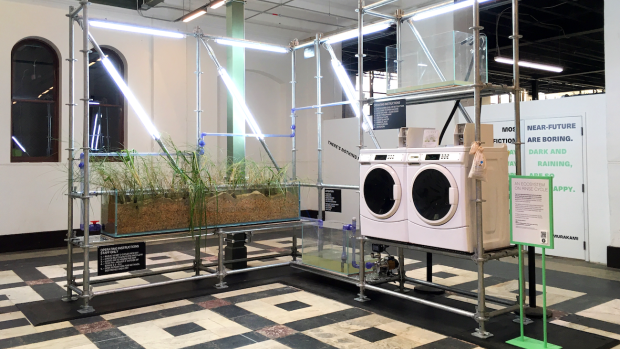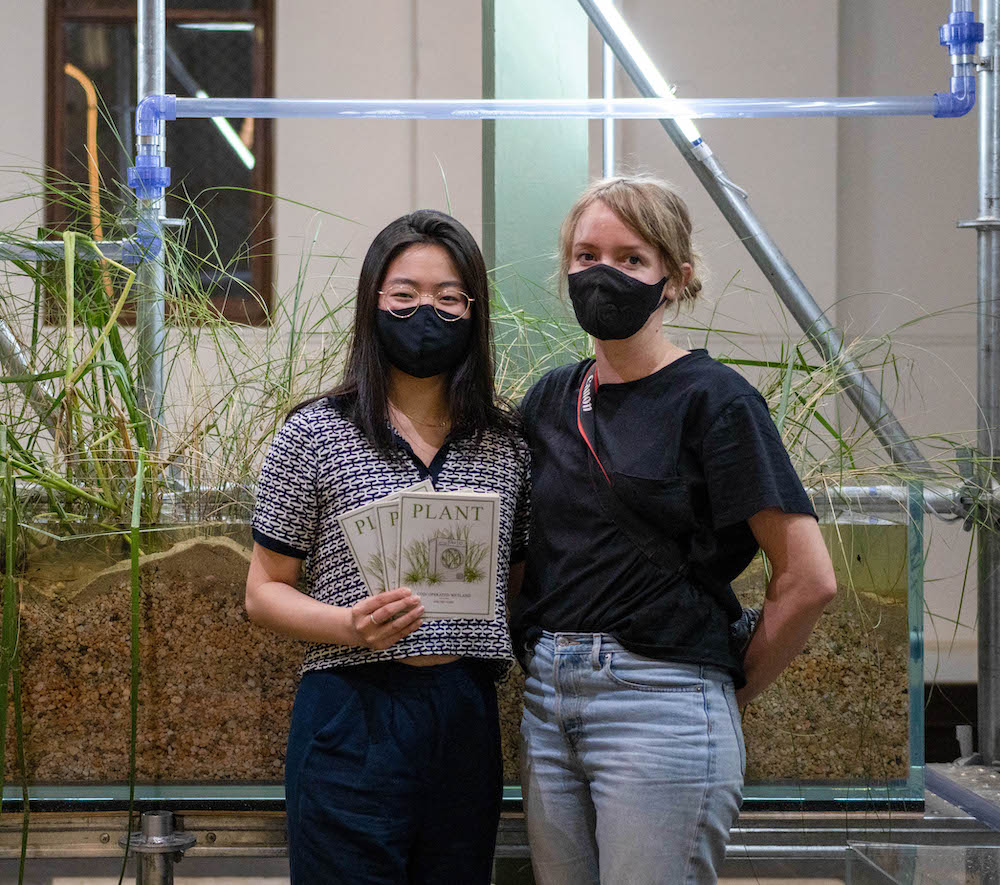Tega Brain’s Coin-Operated Wetland is a call to action ...
... because ecologically destructive habits don’t simply come out in the wash

Professor Tega Brain's exhibit is currently on display as part of the “Futures” exhibit, running until July 6, 2022, at the Smithsonian Institute.
Wetlands are home to an enormous array of plant and animal species, and they can improve water quality and mitigate the effects of climate change. Yet humans continue to destroy them for industrial and other uses.
Industry Assistant Professor Tega Brain, who teaches in NYU Tandon’s Integrated Design & Media (IDM) program, thinks we would do better if we took a “mutualistic” approach to wetlands and other parts of the natural world — one in which we directly connect human action with environmental health and consider the effects of our habits on other species.
“There is no reason we have to wash our dishes or flush our toilets with what is essentially drinking water,” she says. “We need to rethink our values and redefine what we consider acceptable.” If we learn to compromise, she asserts, our ecosystems will benefit.
Brain illustrates that principle in her latest large-scale work of what she has characterized as “eccentric engineering” — thought-provoking installations that lie somewhere at the crossroads of art, ecology, and traditional engineering. She explains that the piece, Coin-Operated Wetland, collapses the distance between human and environment, confusing concepts of upstream and downstream and posing questions around ecology, co-existence, and the culture of engineering.
Coin-Operated Wetland involves two washing machines of the type you’ll see in any laundromat. A pump and set of pipes connects them to a small-scale wetland Brain has constructed from clear boxes filled with aquatic plants, dirt, and water. Another box holds the filtered water. Inspired by the Chesapeake Bay, the largest estuary in the country, the installation can actually be used to do laundry and asks viewers to fundamentally rethink their place in the environment. In theory, Brain says, if we were willing, the principles of an ecosystem like this, in which humans and nature collaborate, could be extended to entire cities.

IDM student Julia Kim worked with Brain on the project this past summer, as part of Tandon’s Undergraduate Summer Research Program. “The idea of the project is so innovative and it is a creative step in making people environmentally conscious,” Kim says. “Tega is so knowledgeable and passionate about her work and it shows in all her finished pieces. She was a great guide to me ... but also gave me lots of creative freedom which I appreciated!”
Coin-Operated Wetland is currently on display as part of the “Futures” exhibit, running until July 6, 2022, at the Smithsonian Institute. Organized around themes of sustainability, connectivity, and imagination, “Futures” is unlike any other exhibit in the museum’s long history. Housed in a section that once displayed the original Star-Spangled Banner and inaugural gowns worn by American First Ladies throughout history, it includes a robotic health aide, a deli case of lab-grown meat, and a biodegradable burial pod. “In a world that feels perpetually tumultuous, there is power in imagining the future we want, not the future we fear,” says Rachel Goslins, a museum official.




